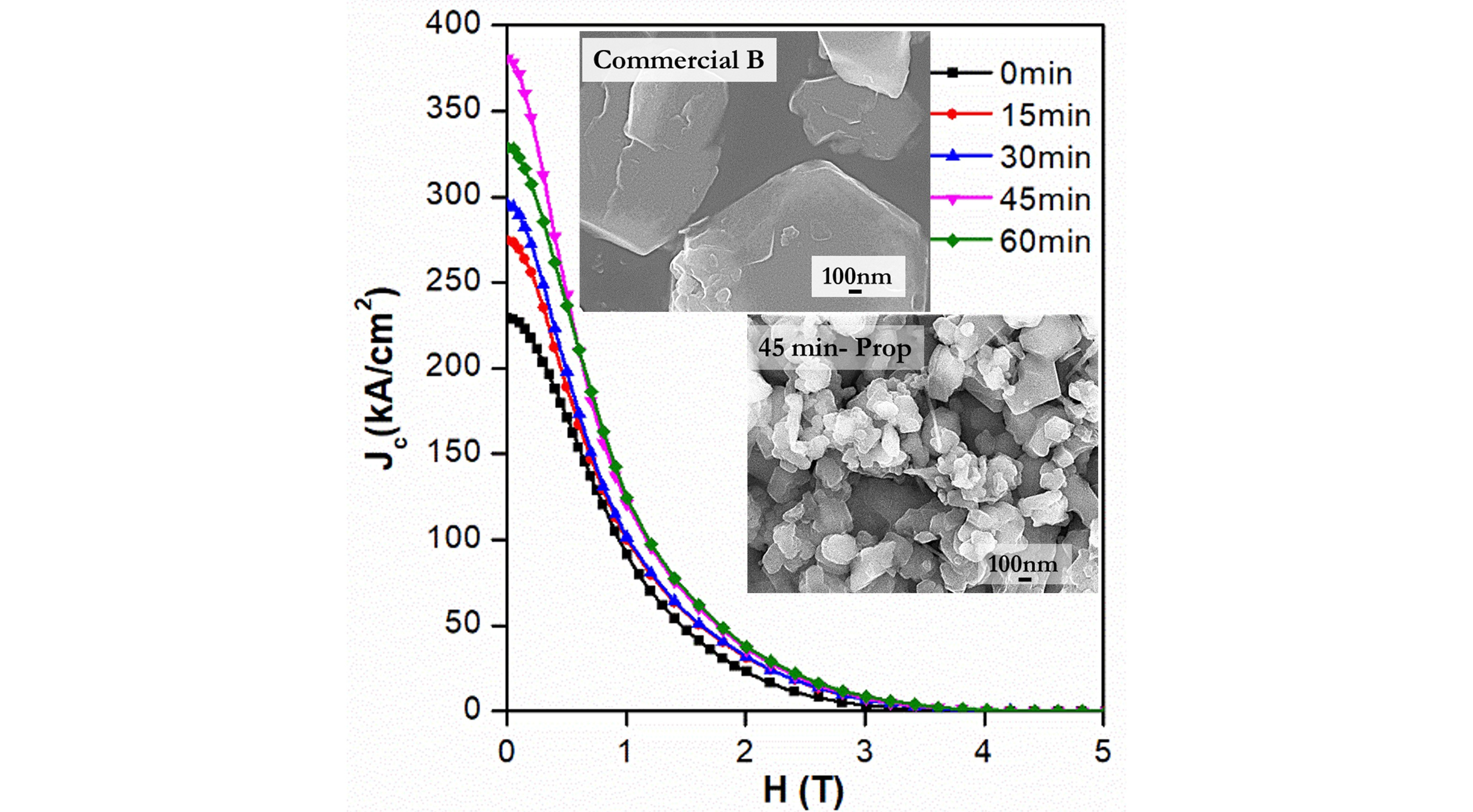MgB2 finds a wide range of applications, including the manufacture of coils and magnets for magnetic resonance imaging, nuclear magnetic resonance, magnetic drug delivery, fault current limiters, electric motors, and transportation. According to research, MgB2 is a good candidate for polycrystalline superconducting magnets as it exhibits good critical current density (Jc) and a high trapped magnetic field (TF). It, however, suffers from weak magnetic flux pinning. To enhance pinning, it is essential to tune the pinning centers in MgB2 – the boundaries of grains or small crystals that constitute MgB2. To this end, researchers have now shown how nano-sized B particles can be used as B precursors to fabricate nano-sized MgB2 grains with strong grain boundary pinning and high Jc.
Currently, B nanoparticles are produced by ball milling, pyrolysis, and sintering. These techniques, however, suffer from drawbacks such as low purity output and poor cost-effectivity, necessitating better alternatives. To this end, a group of scientists led by Prof. Muralidhar Miryala from Shibaura Institute of Technology (SIT), Japan recently explored high-energy ultra-sonication as a cost-effective alternative for refining coarse B powder dispersed in 2-propanol up to nanoscale sizes. Their work was made available online in the Journal of Alloys and Compounds on 14th April 2023.
“In this technique, ultrasonic vibrations impart high speeds to B particles in the solvent, leading to collisions. The resulting friction and shear tearing, compression, and energy release by the collapse of tiny air bubbles produced during collision break down B particles to nanometer sizes,” explains Prof. Miryala.
Using 2-propanol as the solvent for B, the researchers ultrasonically refined cheap commercial B powder for 45 minutes to produce oxide-free nm-sized B particles. They then utilized them to fabricate bulk MgB2 with scarce oxide and no carbon impurities, which showed superconductivity at around 38.5 K. Furthermore, it showed high Jc values of 500 and 380 kA cm-2 at 10 K and 20 K, respectively. The latter of these Jc values marked an 80% improvement compared to that for bulk MgB2 prepared from cheap B powder and was at par with that for expensive commercial B powder. The observed increase in Jc was due to better grain boundary pinning in MgB2 as revealed by microstructural analysis, and theoretically supported by the Dew–Hughes theory.
Finally, the researchers performed field cooling magnetization simulations, predicting that a 40-mm wide and 10 mm-thick MgB2 disk prepared from ultrasonically refined B powder can exhibit a high TF of 2.5 teslas. “These findings bring MgB2 superconducting magnets, which can be fabricated in the form of tapes, wires, and films, a step closer to their commercialization,” envisions Prof. Miryala.
Indeed, with a sustainable and low-cost technique for developing high-performance MgB2 superconductors, the present work could unlock the potential of MgB2 super magnets!
***
Reference
DOI: https://doi.org/10.1016/j.jallcom.2023.170146
About Shibaura Institute of Technology (SIT), Japan
Shibaura Institute of Technology (SIT) is a private university with campuses in Tokyo and Saitama. Since the establishment of its predecessor, Tokyo Higher School of Industry and Commerce, in 1927, it has maintained “learning through practice” as its philosophy in the education of engineers. SIT was the only private science and engineering university selected for the Top Global University Project sponsored by the Ministry of Education, Culture, Sports, Science and Technology and will receive support from the ministry for 10 years starting from the 2014 academic year. Its motto, “Nurturing engineers who learn from society and contribute to society,” reflects its mission of fostering scientists and engineers who can contribute to the sustainable growth of the world by exposing their over 8,000 students to culturally diverse environments, where they learn to cope, collaborate, and relate with fellow students from around the world.
Website: https://www.shibaura-it.ac.jp/en/
About Professor Muralidhar Miryala from SIT, Japan
Dr. Muralidhar Miryala is a Professor at the College of Engineering/Graduate School of Science and Engineering and a member of the Board of Councilor at Shibaura Institute of Technology (SIT). He is also the Chair and OB at World Technology University Network (WTUN). His primary research interests comprise solid state physics and materials science, particularly materials for energy and the environment, such as high-temperature superconductors. He has over 500 publications to his credit, including patents, books, review articles, research articles, press releases, etc. He has received several awards for his research contributions, including the prestigious 2021 Pravasi Bharatiya Samman Award from the President of India and the SIT Excellent Education Award (2021) by the Chairman of the Board of Directors.
Funding Information
This study was partly supported by Shibaura Institute of Technology (SIT) International Research Center for Green Electronics and Grant-in-Aid FD research budget code: 721MA56383 and the Strategy AV21 of the Czech Academy of Sciences, the research program AV21-VP3 “Energy storage in flywheels.”


